Personality dimensions
I designed this working prototype for an innovative system of visualizing and understanding personality.
The client, Populace, is a think tank that is challenging the approach of mainstream personality tests, such as Myers-Briggs, which focus on grouping people into categories that, in practice, often fail to correspond with how people actually behave and interact.
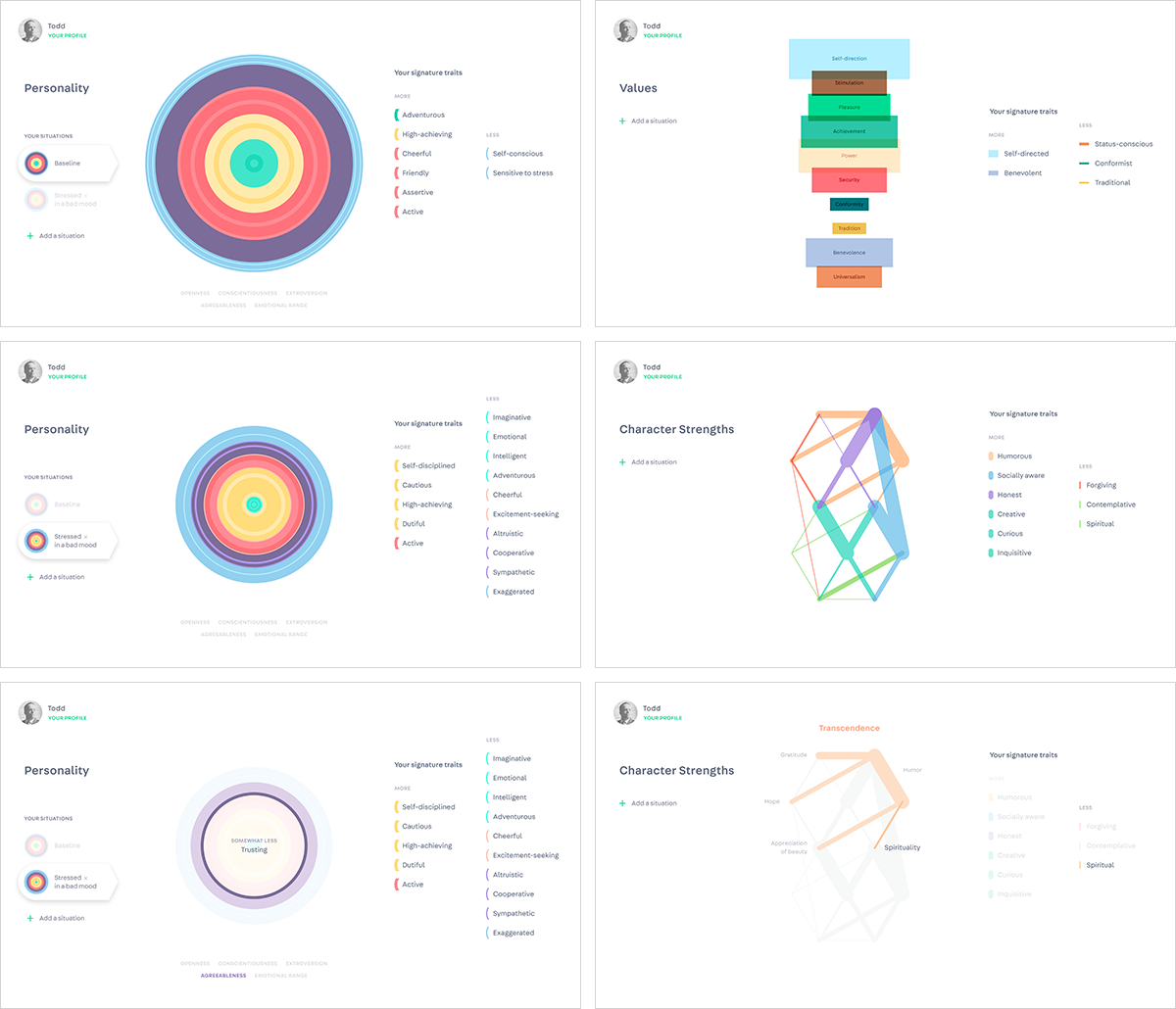
They approached our team with a particular interest in using data to capture how individual personalities have a more fluid nature, shaped directly by variables such as mood, sleep, stress, group dynamics and different kinds of social interaction.
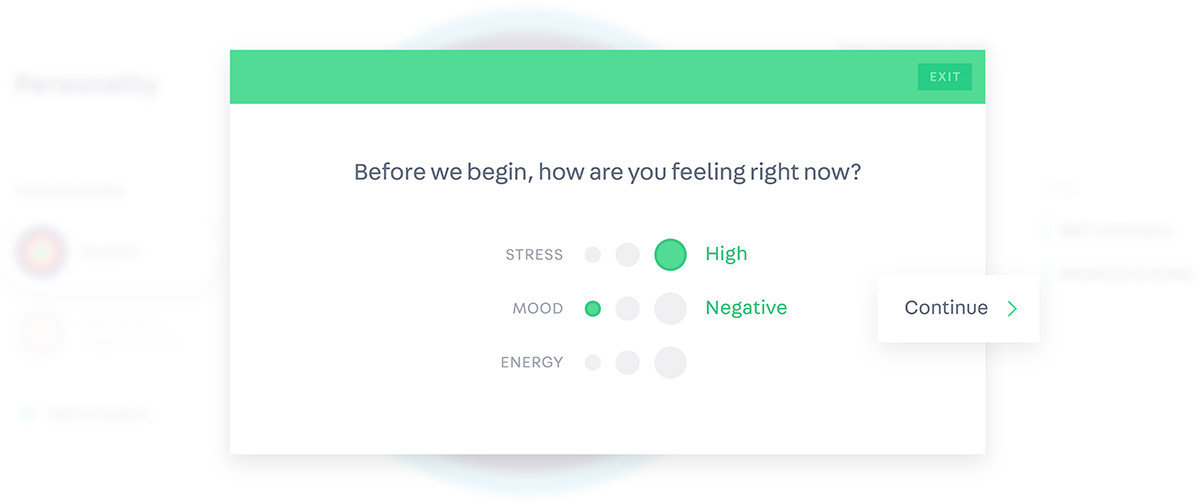
Rather than assign people scores or types, Populace was looking for a visual system that would create unique forms for individuals based on a combination of measures.
And interacting with these animated forms in a digital tool — hovering on the encoded shapes, adjusting parameters, providing more detailed responses — would offer people a more nuanced understanding of how those dimensions weave together, expand or contract with different stressors, and evolve over the course of years.
Under the surface, the shapes are driven by quantitative metrics, but the goal was to visually translate those numbers in an intuitive way that would shift people’s attention toward a qualitative perspective that reflects their identity honestly.
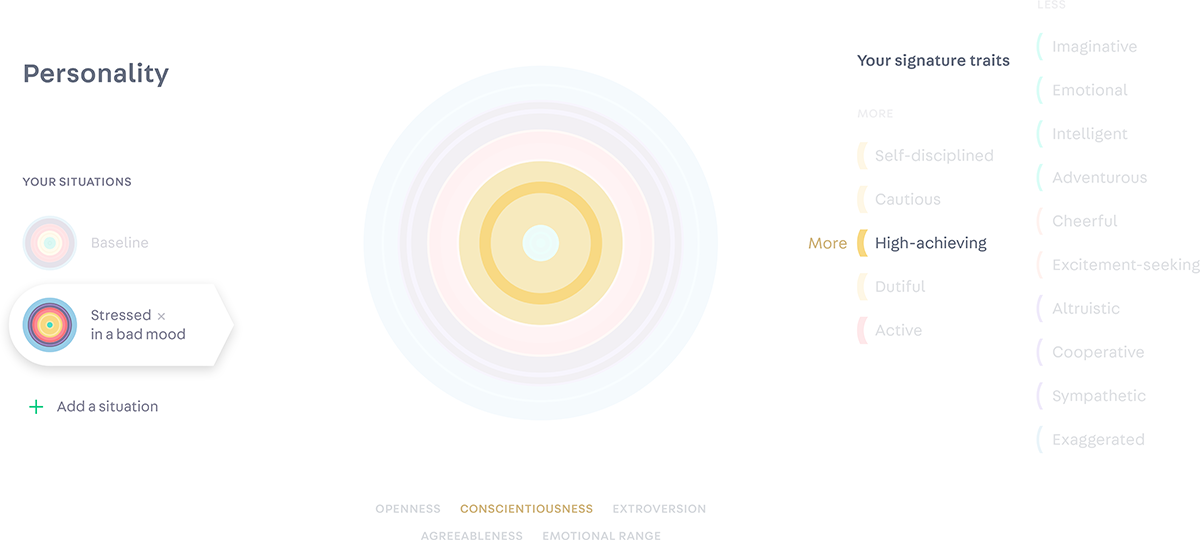
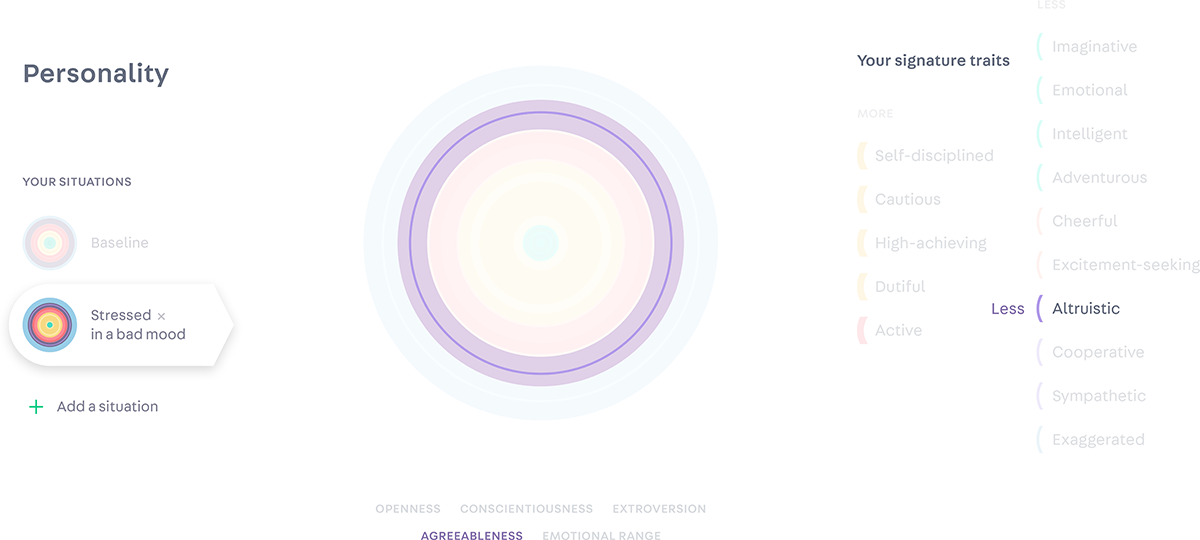
The model is a suite of seven combined personality constructs. There’s a main test to track overarching characteristics and more tailored tests that focus on values, morals, strengths and other personality indicators.
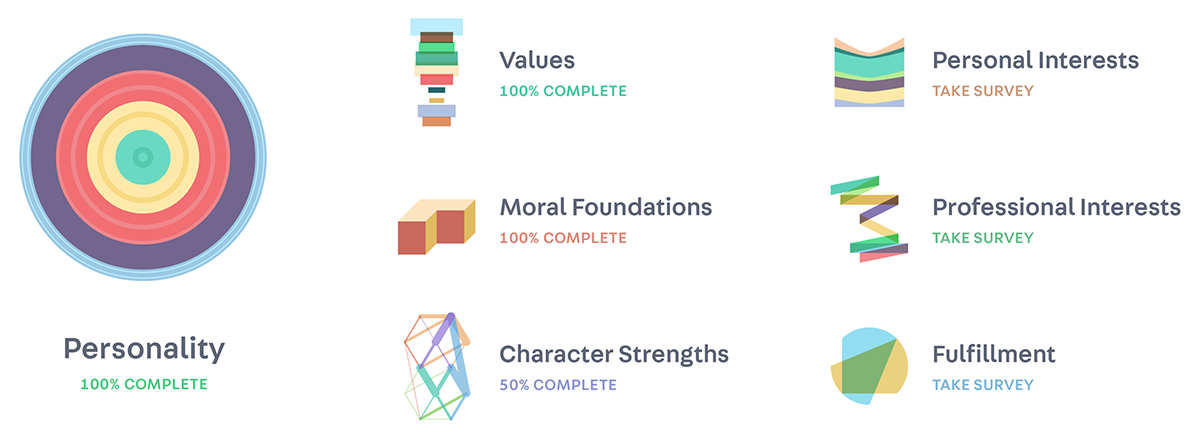
For each measure, I developed a form that can expand, shrink, and transform in response to the fluidity of your responses over time and across contexts.
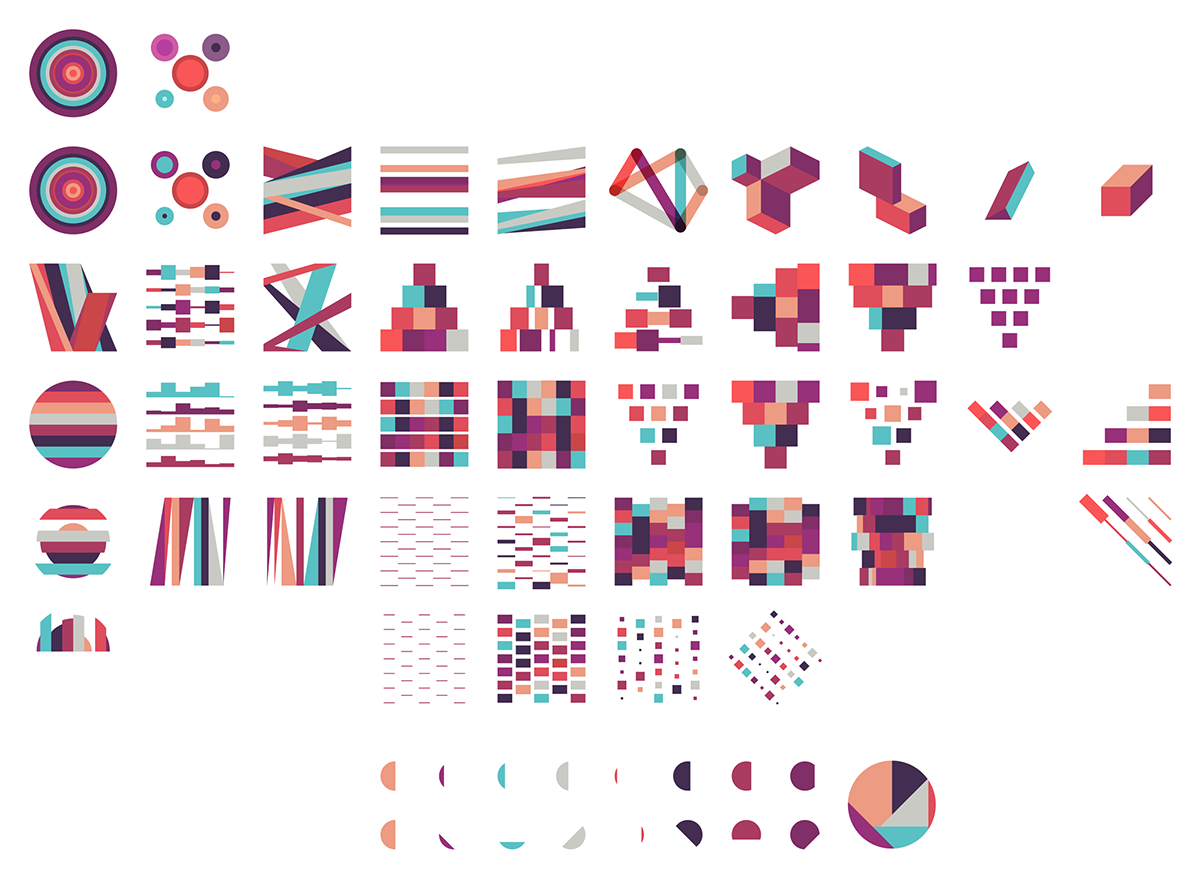
Initial sketches around these forms is done loosely and in parallel with analysis of the data.
While exploring different visual forms, I worked closely with Mark Schifferli, who developed a rough draft of the prototype to visualize the data driving the tests so we could get a sense of the parameters.
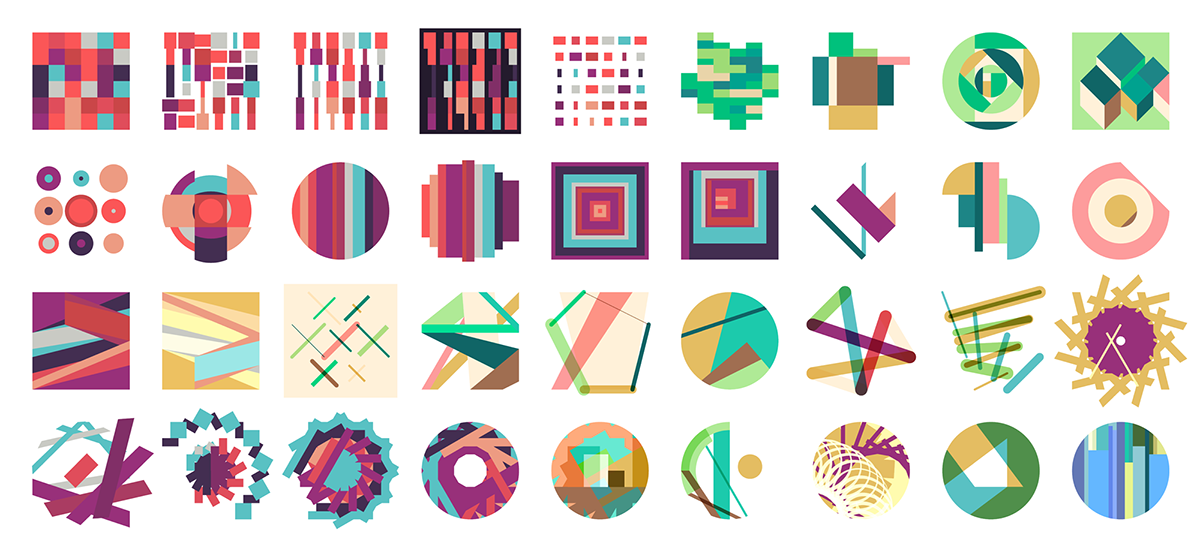
With the prototype in hand, we could test out the variability of an individual’s unique set of answers for any construct:
Does each positive response to a question add a new layer? This process could gradually push the shape in a new direction…
…and negative responses could chip away at it, hollowing out the form or sharpening its edges.
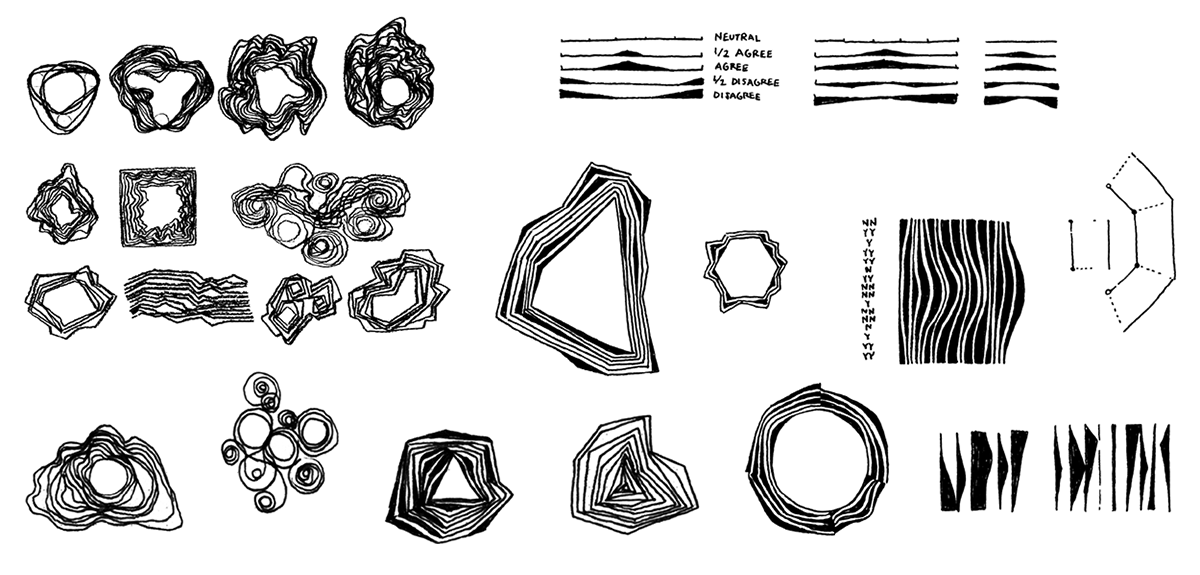
Mapping out relationships between the data input and the assembly of an organic form led to other sources of inspiration — magmatism and geology, fundamental particles and forces, strange attractors, paper marbling, moss, lichens and fungi.
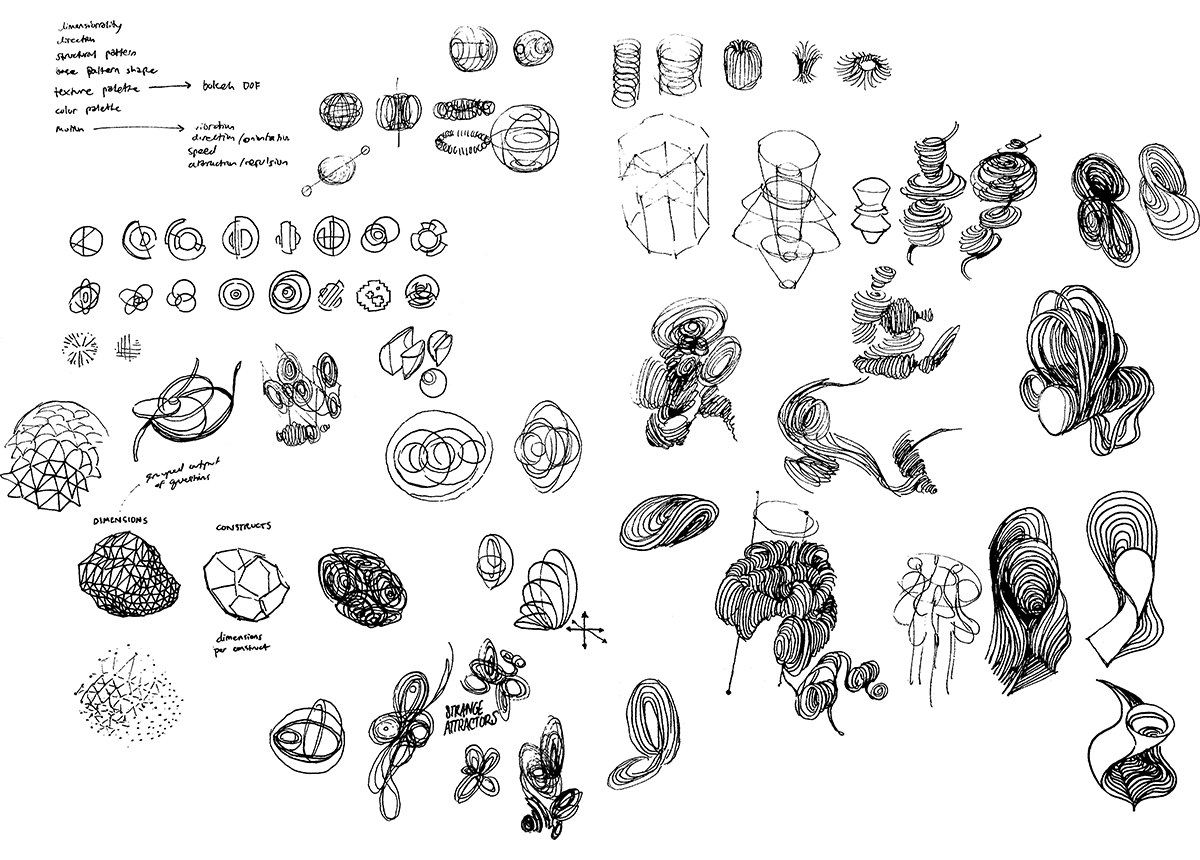
One idea on the table early on was the possibility of producing tactile artifacts, possibly with flexible materials or projected light.
While the final tool features only digital interactions, considering a variety of physical forms and material attributes opened up interesting directions in the sketching process.
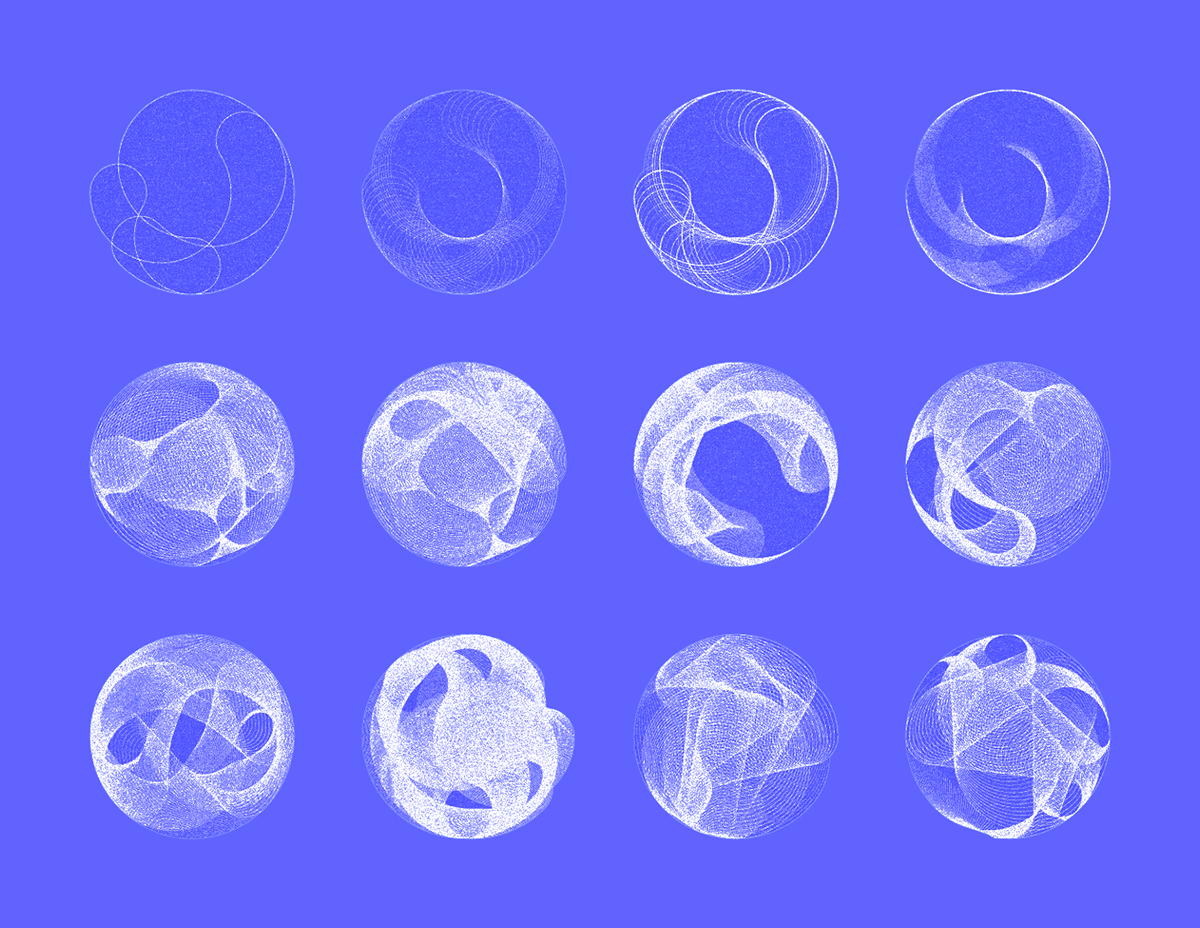
Those properties came into play for some of the more expressive indicators.
Character strengths is an interconnected lattice of beams and joints that can independently strengthen or lose weight as responses are associated with the underlying axes.
Moral foundations applies a system that generates a chiseled, monumental shape suggesting an individual’s core worldview. These polyhedron forms can also tessellate, expanding the construct into a more expansive repeating pattern or texture.

